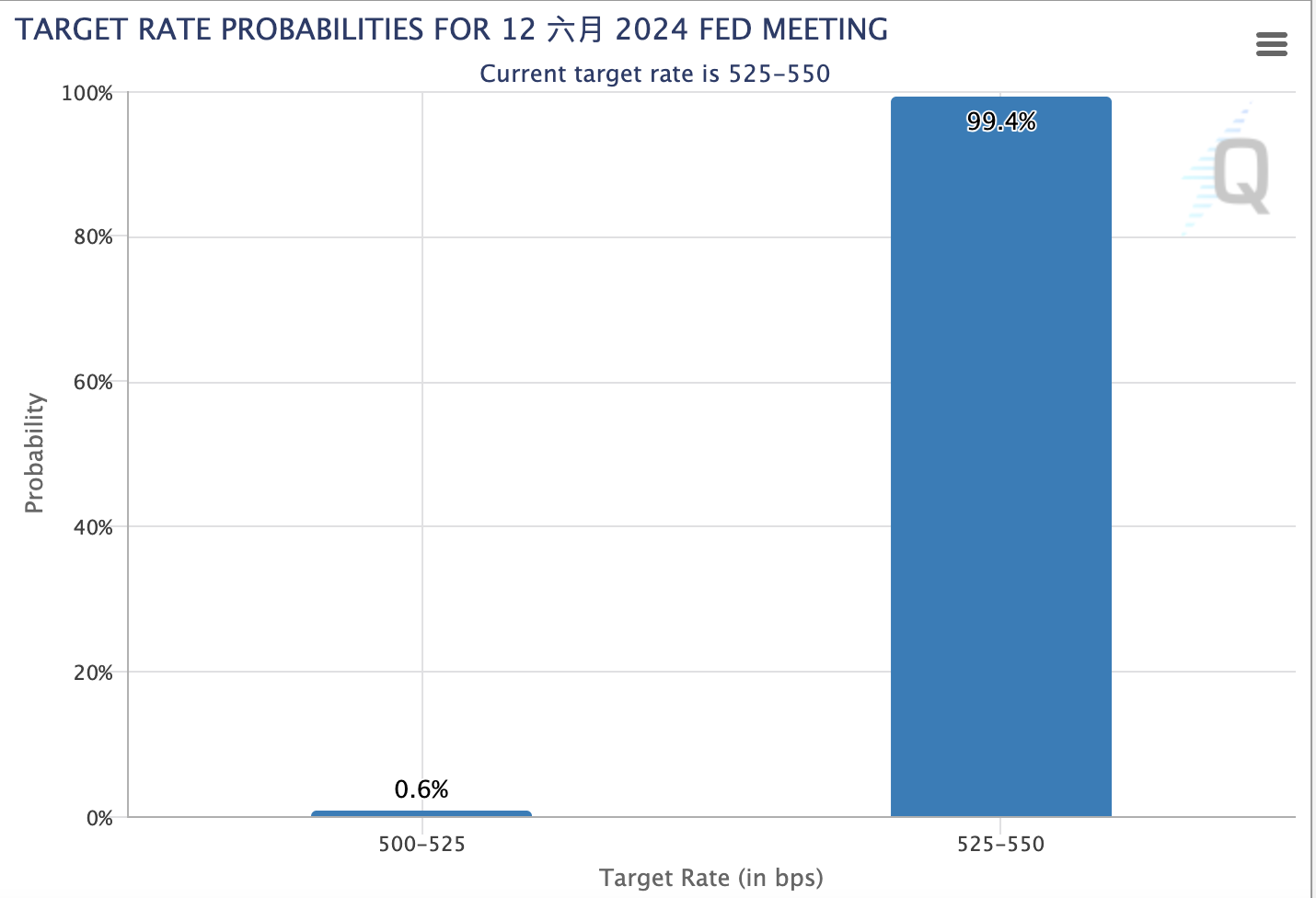At its interest rate decision-making meeting in early May, the U.S. Federal Reserve (Fed) maintained the federal benchmark interest rate at a range of 5.25% to 5.5%, freezing interest rates for the sixth consecutive time. The Federal Reserve is currently holding a Federal Open Market Committee (FOMC) meeting, and is expected to announce the latest interest rate decision at 2:00 midnight tomorrow (13th).
FOMC meeting focuses on interest rate dot plot
According to CME Group Fedwatch data , the chance of interest rates remaining on hold is as high as 99.4%. However, most analysts predict that more Fed officials will revise down their expectations for the number of rate cuts expected this year, bringing the median number of rate cuts of 1 point (0.25 percentage points) from 3 to 2 or less. Therefore, the focus is more on the "interest rate dot plot".
In addition to interest rate decisions, the "US May Consumer Price Index (CPI)" data, an important indicator of inflation, will also be released at 20:30 today. Wall Street Journal reporter Nick Timiraos, who is known as the "Fed's mouthpiece", said that dovish and hawkish officials have now agreed to continue to wait and see, and CPI will determine whether the number of expected interest rate cuts this year is one or two, or no reduction at all.

HSBC Analyst: The Fed’s hawkish attitude is a good time to buy the dips
On the other hand, analysts at HSBC pointed out that there are some hawkish risks in this interest rate decision meeting. Nonetheless, subsequent interest rate movements are unlikely to return to last year's levels and the weak performance of risk assets will be temporary.
Therefore, the Fed's hawkish attitude may provide a good entry point for investing in risk assets.
The market is highly uncertain about Fed information
On the other hand, the U.S. Federal Reserve has become increasingly resolute in suppressing inflation. Federal Reserve Chairman Jerome Powell has repeatedly emphasized that the inflation rate will be reduced to 2%. However, in the current high interest rate environment, nearly 300 companies in the United States have Banks are under pressure to close down, and consumers are forced to change their past spending habits.
Extended reading: Report》Nearly 300 banks in the United States are facing bankruptcy! High interest rates create bad debt crisis
Therefore, the market is eagerly looking forward to the U.S. Federal Reserve cutting interest rates as soon as possible. However, the U.S. Federal Reserve seems to be using "specific terms" that the public does not understand to express the current overall economic situation to the public. Among them, the most commonly used words are- Neutral rate.
Since the neutral interest rate cannot be directly observed, most people cannot directly know what the Fed wants to express. In short, the neutral rate is not a useful tool for explaining monetary policy to the public.
In addition, because the market is focused on the 2% inflation target emphasized by Ball, but has not seen an inflation rate of 2.5% to 3% from the Fed or media articles, it will not disrupt the market economy. Therefore, whenever the market hears that the inflation rate exceeds 2%, it will think that the Fed's policy has not achieved its goals, thus triggering panic in the market.
Perhaps the Fed can convey information through words that are easy for the public to understand and at the same time convey correct economic concepts, which can prevent the market from panicking due to wrong speculation.








